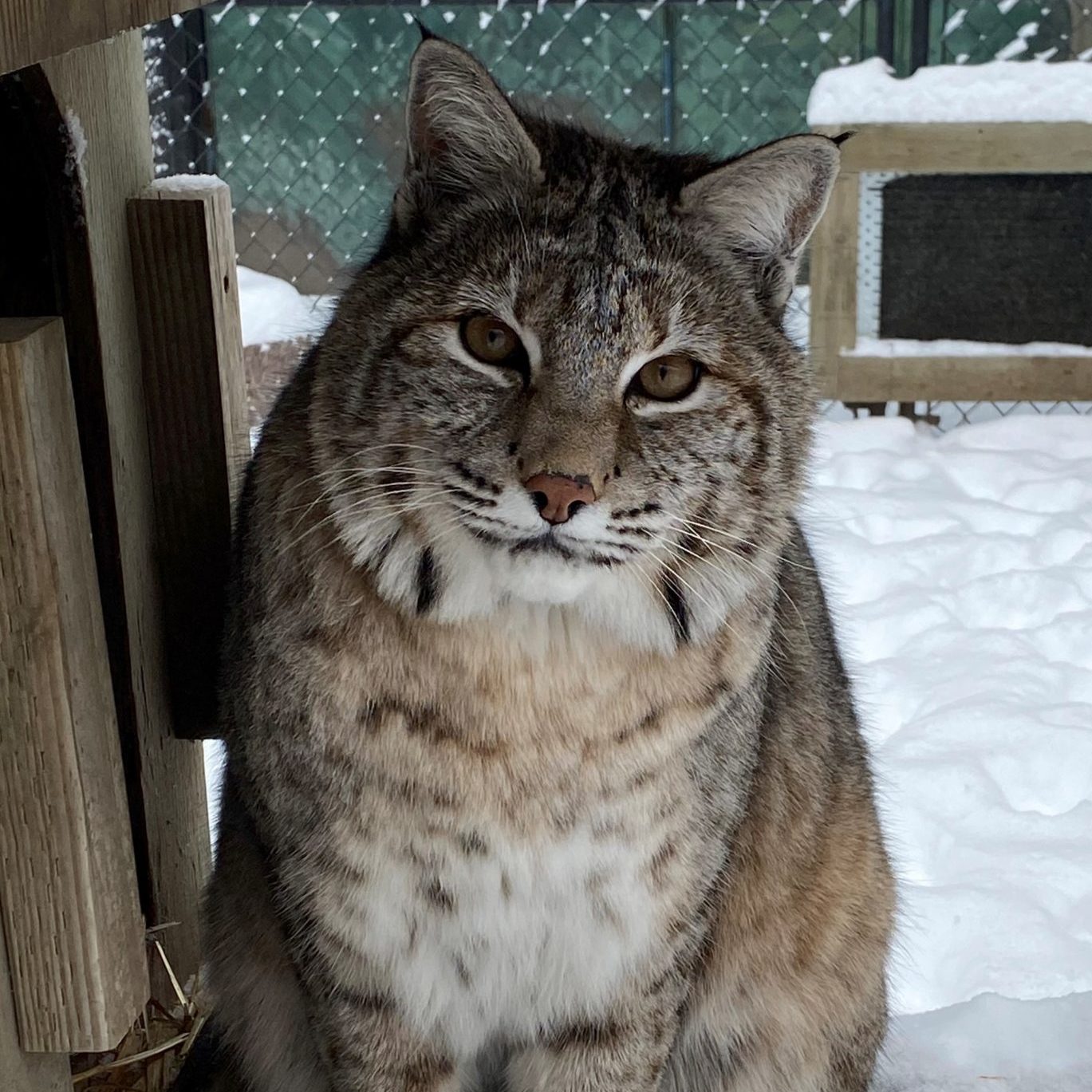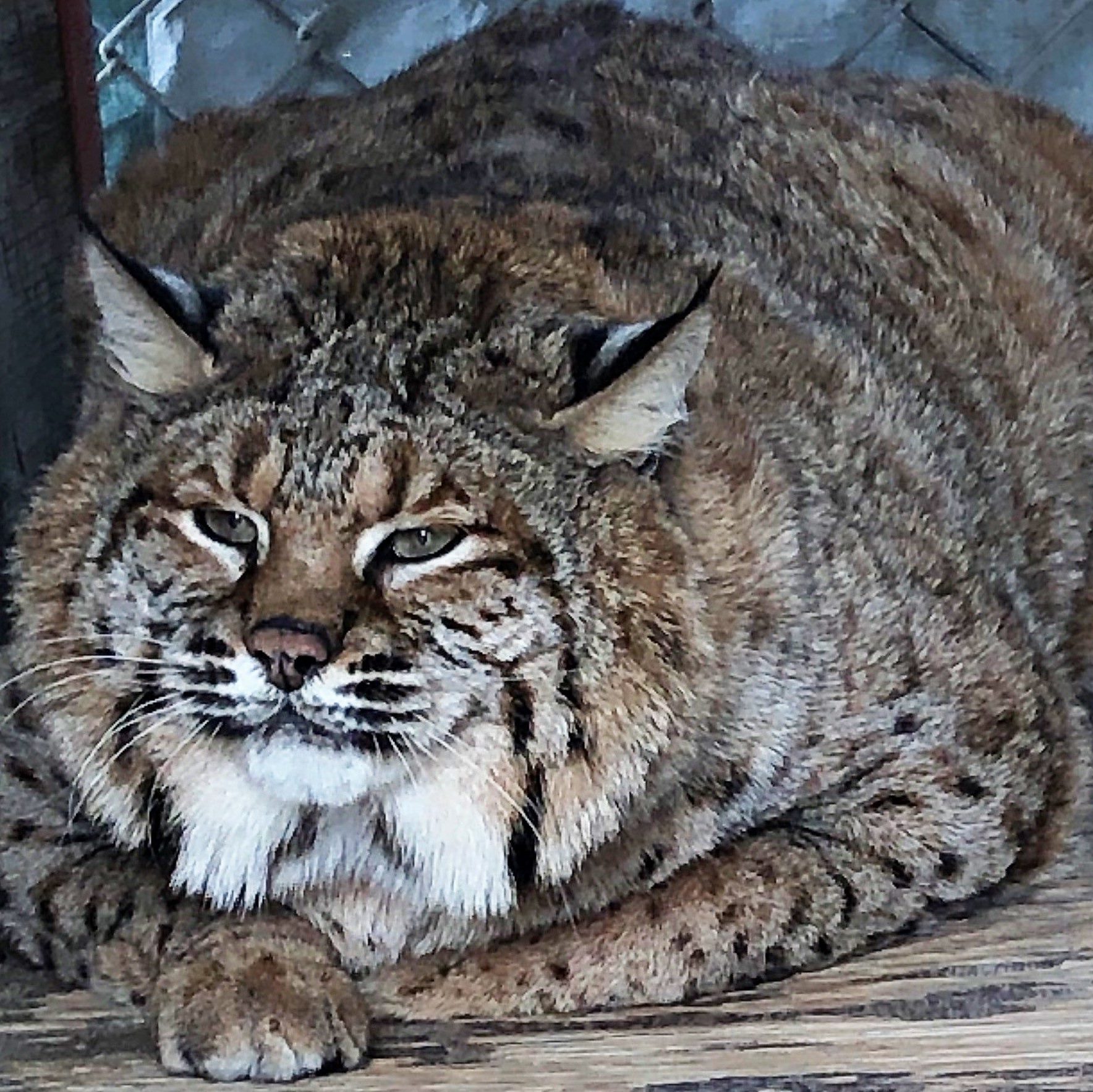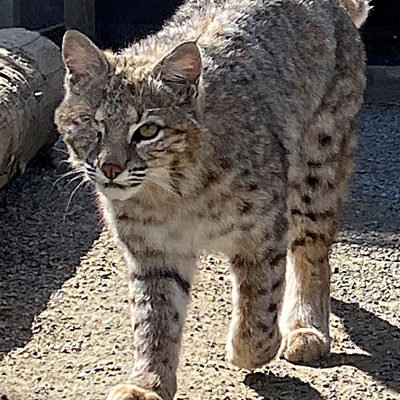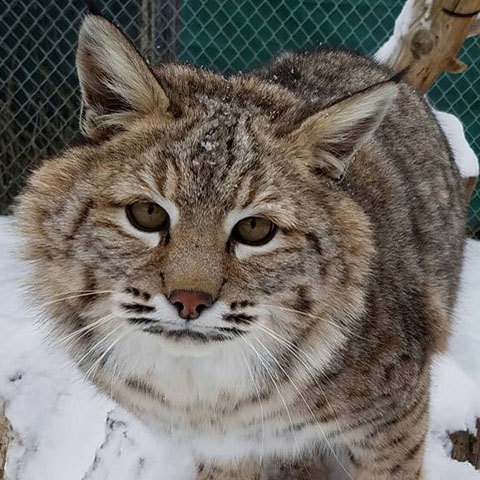Aw, the all too common bobcat story. Bobcat kittens are cute and start out little, but grow into their full wild selves as they mature. Please remember bobcats do not make good pets! Bobcats are the most requested or needed rescue of all privately-owned wildcats. They are illegal to own in many locations and/or need bobcat specialized care, nutrition, and respect.
Bobcat Facts – Lynx rufus
Habitat: North America, all regions
Lifespan: Wild 3-12 years; Captivity 15-20 years
Diet: Carnivore
Status: Least concern
Bobcats are part of the Lynx family and are Felis or purring cats. This North American cat is like a slightly smaller version of the Lynx, but it occurs in a wider range of habitats. The coat is shorter, the legs thinner, the feet smaller and the ear tufts considerably reduced or even nonexistent, but the markings can be very similar to the more sandy and spotted ones of the Lynx, and it has the same cheek whiskers. The Bobcat’s usual diet is rabbits, rodents, birds and even deer. Usually silent, Bobcats sometimes make loud screams, hisses, and other sounds during courtship. They are named for their short or “bobbed” tail, which is characteristic of bird eating cats. A long-tailed cat would have trouble maneuvering in the bushes. The white spots on the back of their ears look like eyes to larger predators.
Bobcats may look cute and cuddly, but these felines that live throughout North America are actually fierce predators. They can leap as far as 12 feet to catch prey and have been known to take down much larger animals, such as young deer.
The wild feline is about twice as big as a house cat—and a lot faster. It can run at speeds up to 25 to 30 miles an hour, and it’s skilled at swimming. But the wild cat isn’t totally different from a domestic kitty. Both use whiskers like fingertips to help them feel around their habitat and judge whether an opening is big enough to fit through. They’re both also night owls with superb night vision that helps them see in the dark.
So, when the sun comes up, it’s time for the bobcat to go to sleep in its den. Their sleeping spot is usually in a hollow tree or cave of forests, mountains, and brushlands. You probably wouldn’t ever be invited over to a bobcat’s home, though. These felines are solitary and territorial. They mark their domains with their scent as a way to tell other bobcats to back off. Don’t mess with these cute cats!
Meet Our Bobcats

Amala
Amala was once kept as a pet by a private owner. Although Amala was bred and raised in a captive environment, as with all bobcats, she still holds a wild demeanor. Despite the care her previous owners provided for her, as she matured, she proved to be too dangerous for them to keep. We were contacted and asked to provide a home for her. Adopting her was the logical choice. Initially a very shy cat, having lived isolated for years prior to her arrival, Amala is now one of our more visible bobcats as she continues to develop trust in the zookeepers and her environment. Born March 2009.

Bonnie
Bonnie was donated by her private owner to our facility after circumstances made it impossible for him to care for her anymore. His message that he wanted us to spread was clear: adopting a bobcat was one of the worst choices he had ever made, and Bonnie’s story was not one to copy. We took her in near the start of 2020. At 13 and a half years old and 58 pounds, Bonnie underwent a slow, but steady, weight loss regime as she settled into her new surroundings and got to know our staff. Her slimmer body allows her to be more active and to live a longer life. Born July 4, 2007

Oakley
Oakley is currently our youngest bobcat. She came to live at Cat Tales in late 2019. She has all the ferocity and sass of a young bobcat with the energy to boot, almost never staying still for photos and eagerly challenging anyone to try and prove just how tough she is. Human, bobcat toys, all face her tiny wrath! (Except for her favorite teddy bear, who is for cuddles and nap time). Oakley is our “pirate cat” having lost her right eye to an injury when she was young. This has not affected her ability to be bobcat fast and playfully fierce. Born August 4, 2019

Stitches
Stitches was orphaned in the wild in South Dakota where he was temporarily taken in by the Great Plains Zoo. Cat Tales was contacted as a permanent placement in August 2009 when Stitches was just five weeks old. He arrived by plane and got his name from the idea that he would cause many humans to need stitches if they got too close, due to his dangerously playful personality! Nowadays he likes to play ‘Watch Cat,’ keeping a careful eye on the work of our keepers to make sure that no one slacks off on their job while under his watch. If it is hard to see him, look closer. He has expert camouflage traits that help him hide in his enclosure! Born June 2009


